Way of the ninja
Unlike judo or taekwon-do, ninjutsu is not a sport but teaches a set of skills for survival
Sign up now: Get ST's newsletters delivered to your inbox
Kevin Lim Executive Photojournalist
Follow topic:
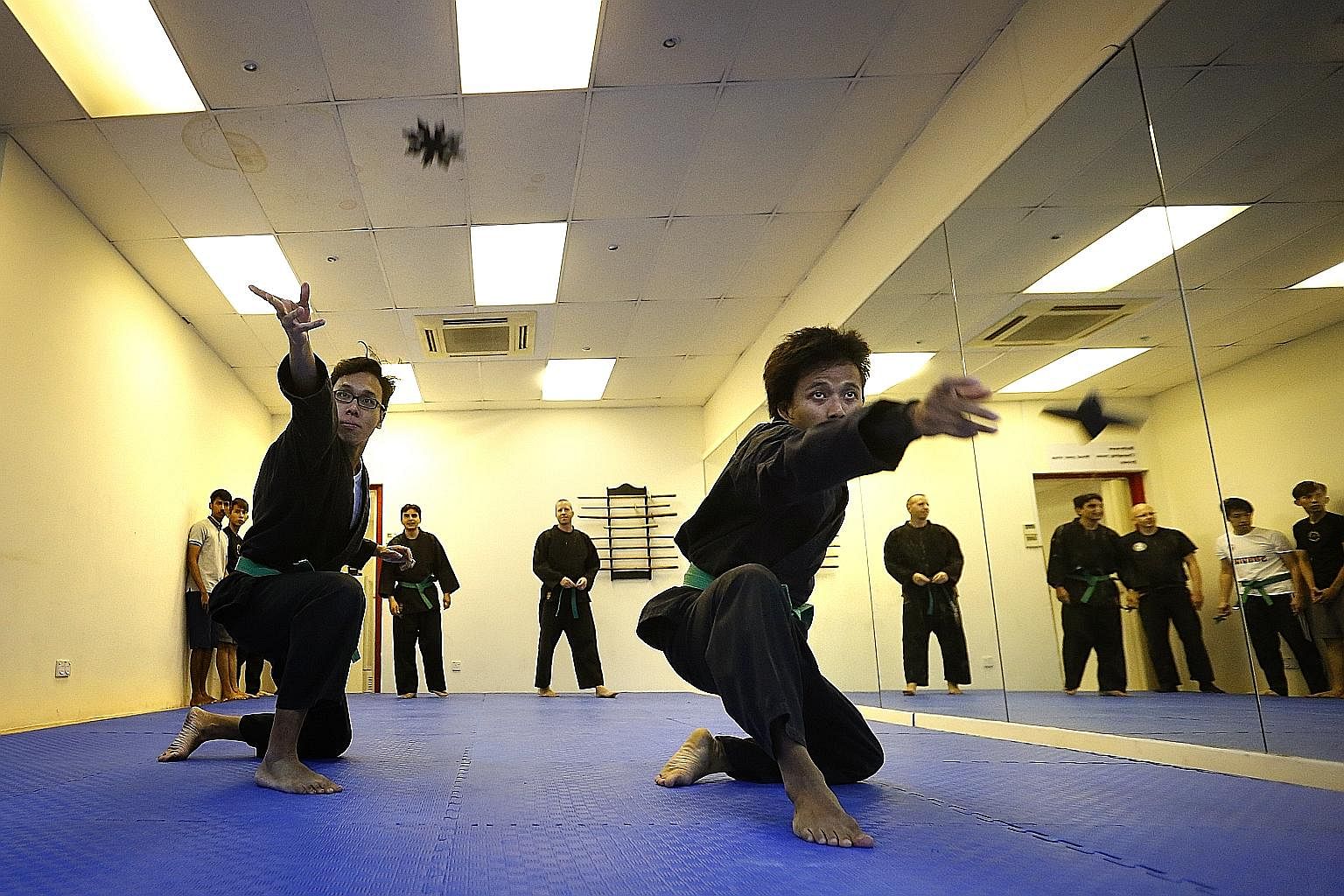
Ninjutsu students Rusydi Khairul (left), a 26-year-old public servant, and Lal Rin Lian, a 27-year-old mechanical engineer, tossing their shurikens or "ninja stars", which are made of wood and rubber, at a standing target after executing a roll. The students are drilled on executing a fluid movement of rolling and retaining composure to deliver a strike, which can be a punch or tossing of an object in the modern context.
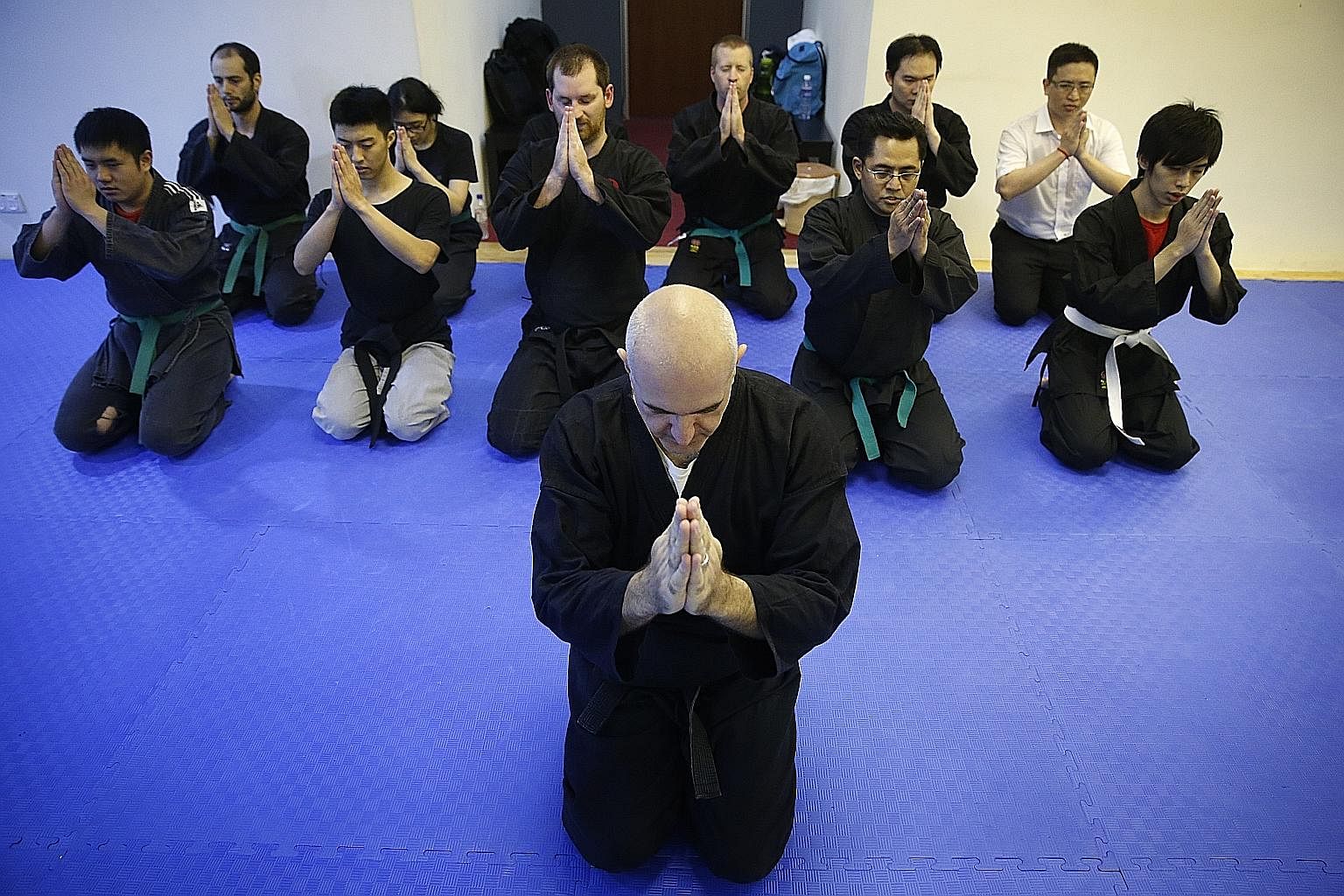
Mr Nachum Kaplan (foreground), 43, who started the Singapore Ninjutsu martial arts school in 2007, opens and closes each class with a ceremonial bow and chant that reminds practitioners to keep themselves open to new learning.
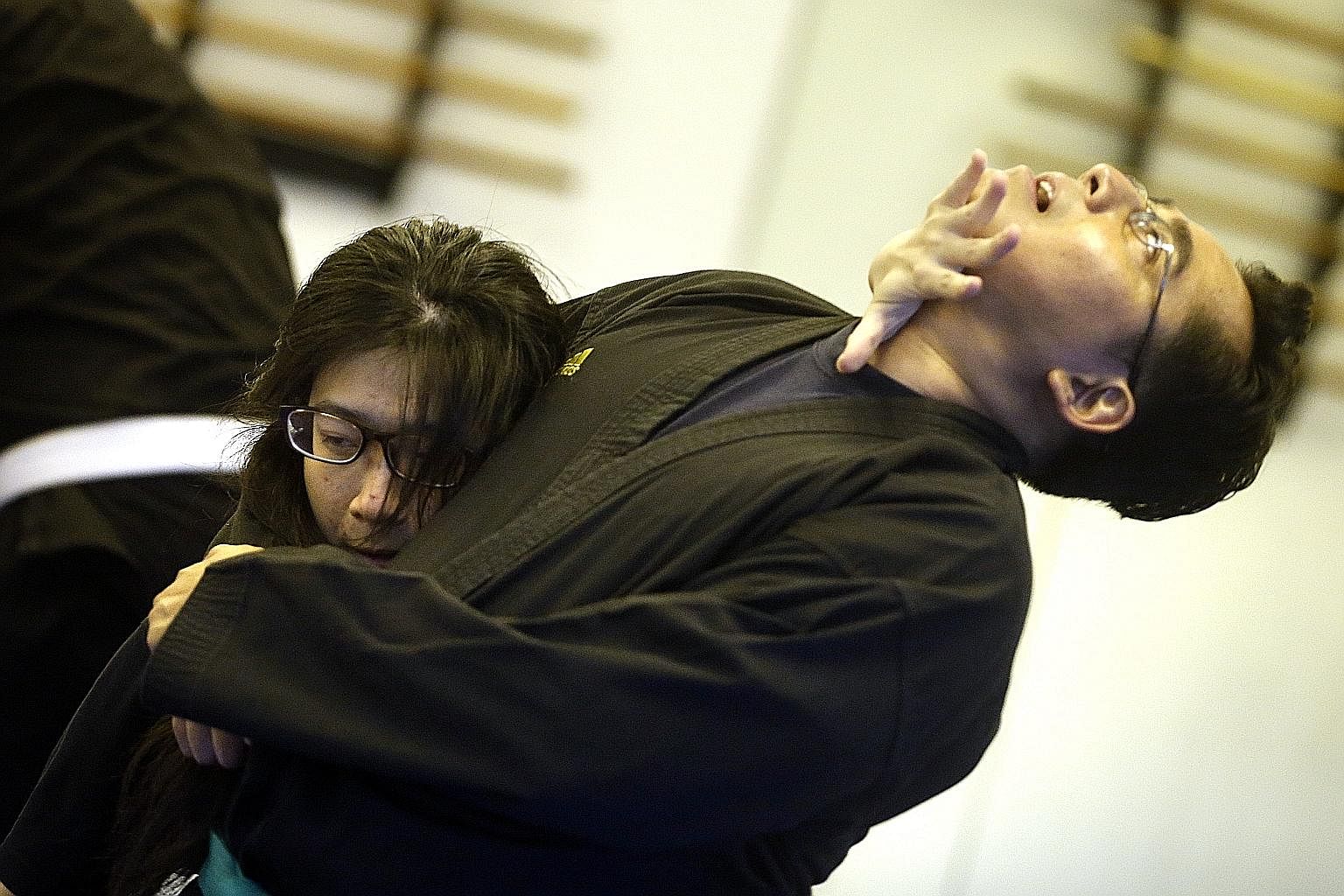
(Above) Ms Tong Hui Wen, 25, who has been practising ninjutsu for five years, goes for her sparring partner's face to get out of a headlock, while other students practise their "kamae", or postures, which provide a basis for the proper execution of moves. Ninjutsu is a martial art - not a sport - and it is not confined by rules when it comes to combat situations.
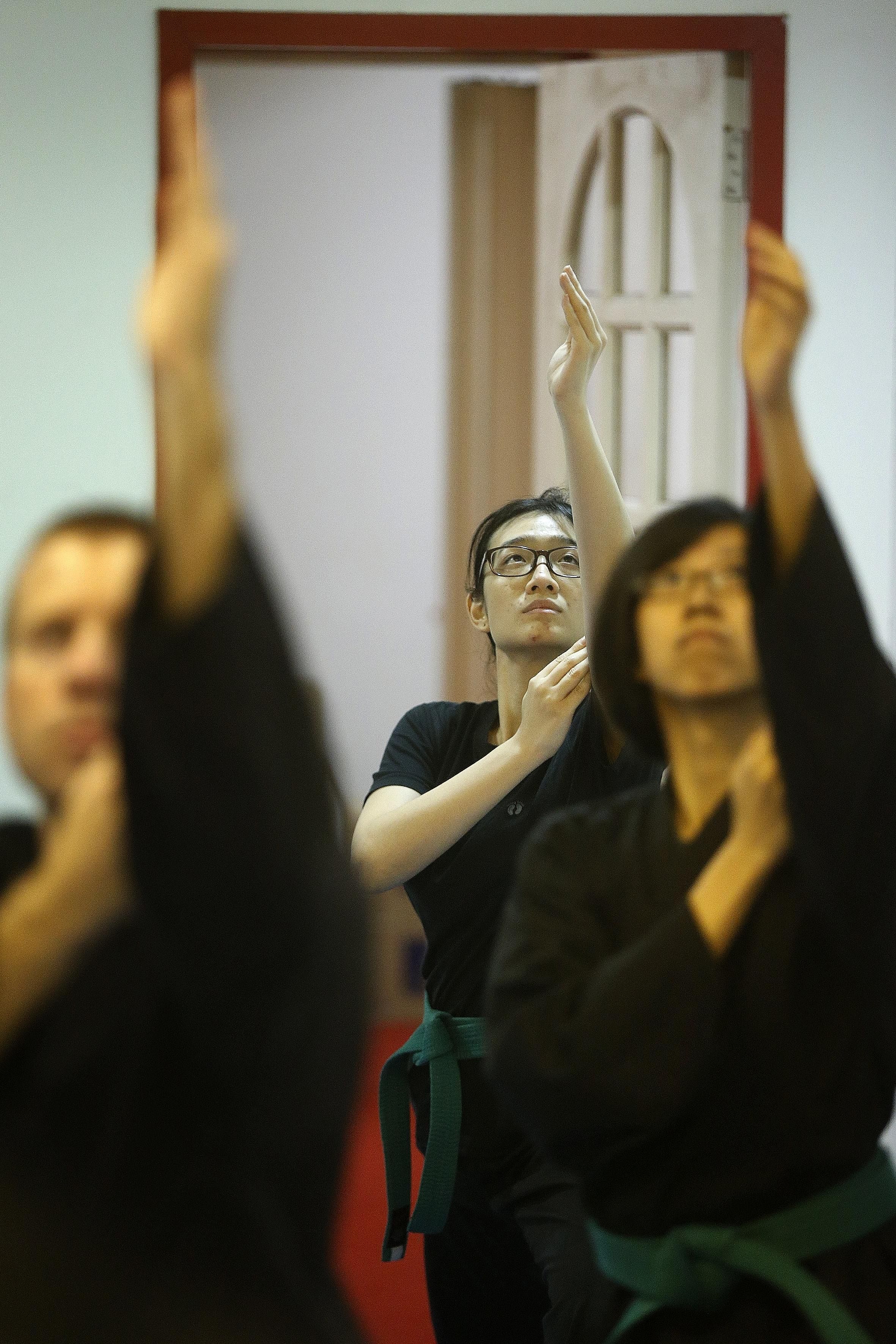
Ms Tong Hui Wen, 25, who has been practising ninjutsu for five years, goes for her sparring partner's face to get out of a headlock, while other students (above) practise their "kamae", or postures, which provide a basis for the proper execution of moves. Ninjutsu is a martial art - not a sport - and it is not confined by rules when it comes to combat situations.
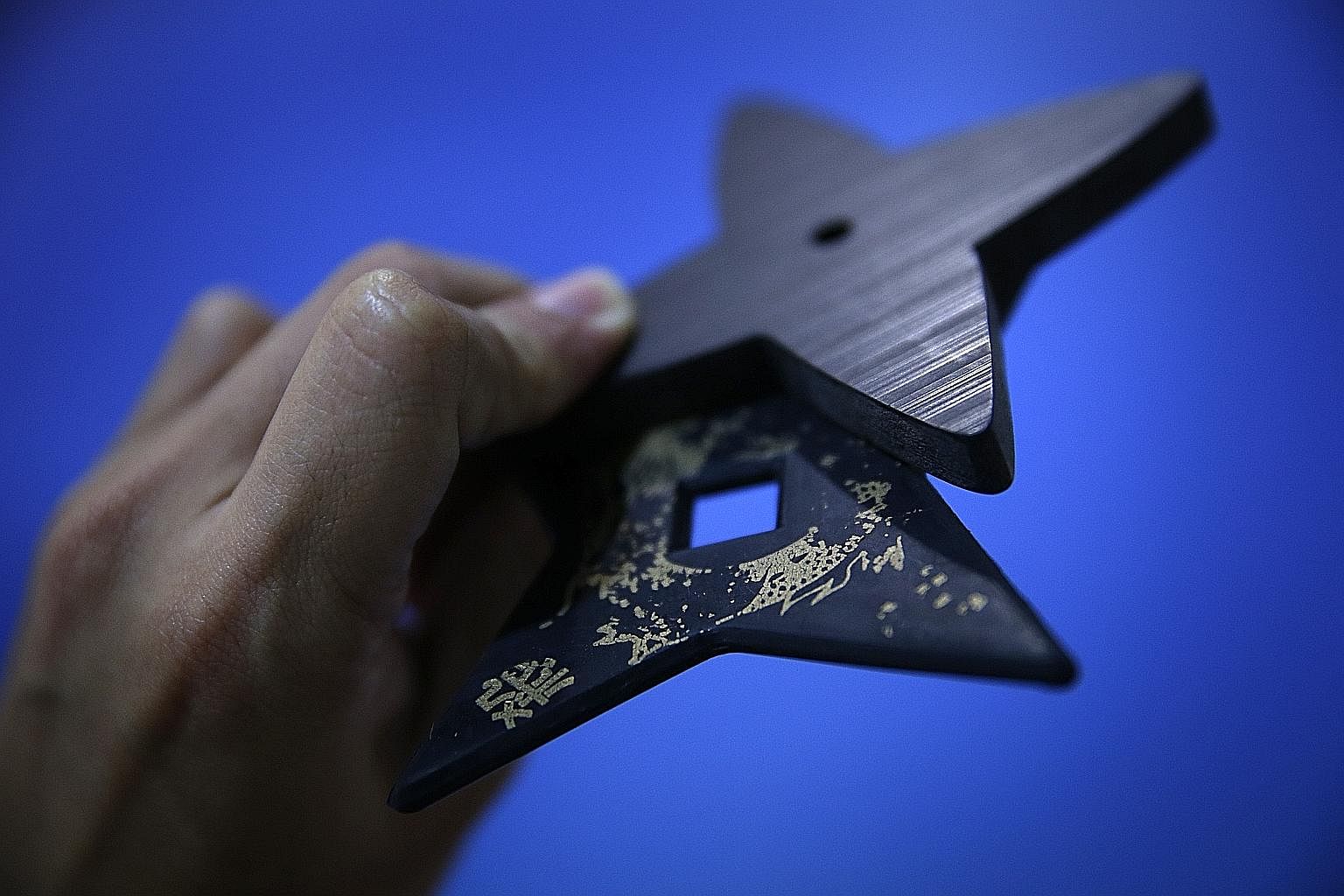
Ninjutsu student Lal Rin Lian uses a shuriken to distract his opponent - a common tactic that seeks to buy a practitioner sufficient time to take out his attacker - as he delivers a surprise kick during training. Besides striking, grappling, locking, choking, throwing and ground fighting, ninjutsu includes a variety of weapon skills, including using the wooden katana and shuriken (above). For training purposes, wooden and rubber shurikens are used as real bladed shurikens are prohibited in Singapore.
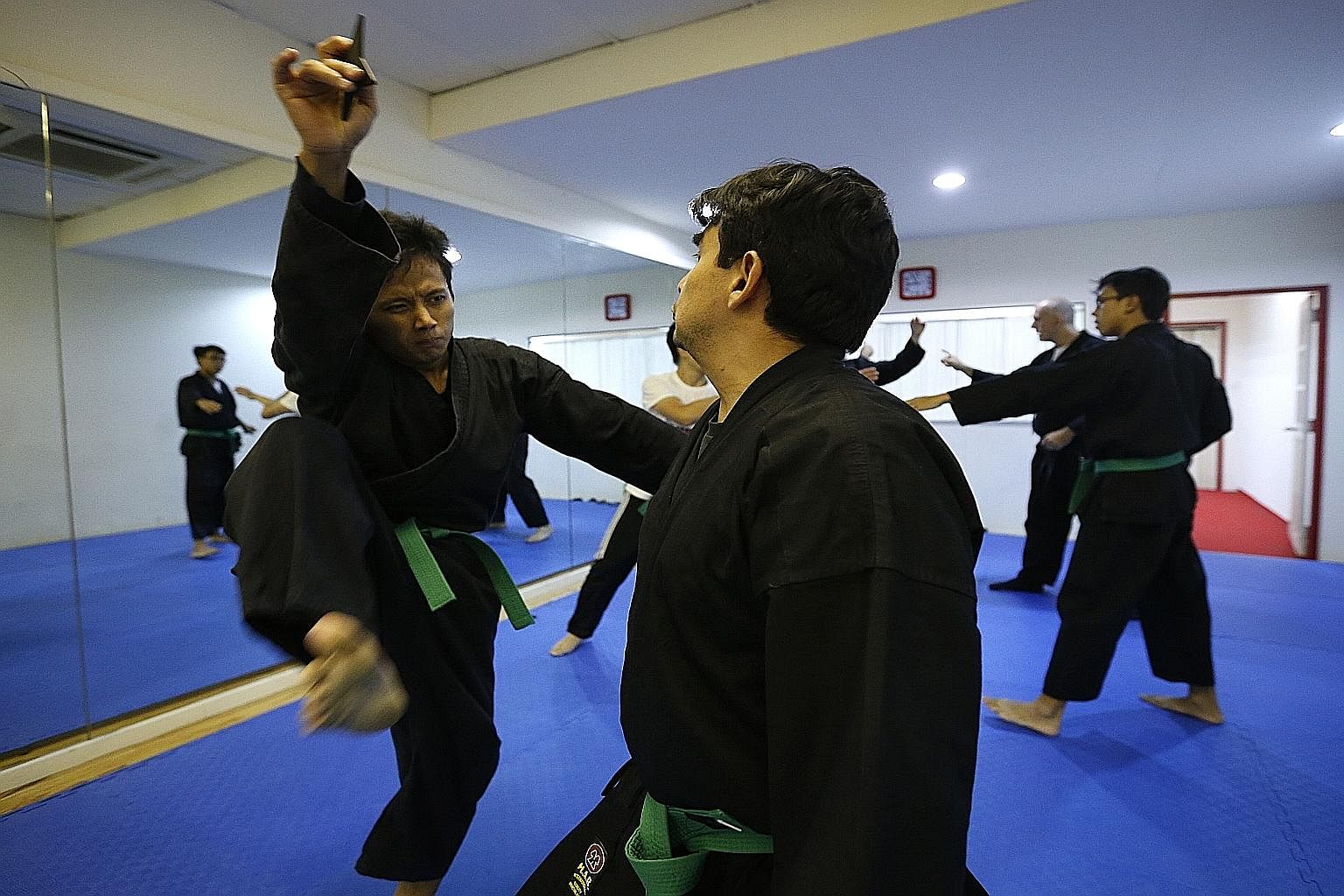
(Above) Ninjutsu student Lal Rin Lian uses a shuriken to distract his opponent - a common tactic that seeks to buy a practitioner sufficient time to take out his attacker - as he delivers a surprise kick during training. Besides striking, grappling, locking, choking, throwing and ground fighting, ninjutsu includes a variety of weapon skills, including using the wooden katana and shuriken. For training purposes, wooden and rubber shurikens are used as real bladed shurikens are prohibited in Singapore.
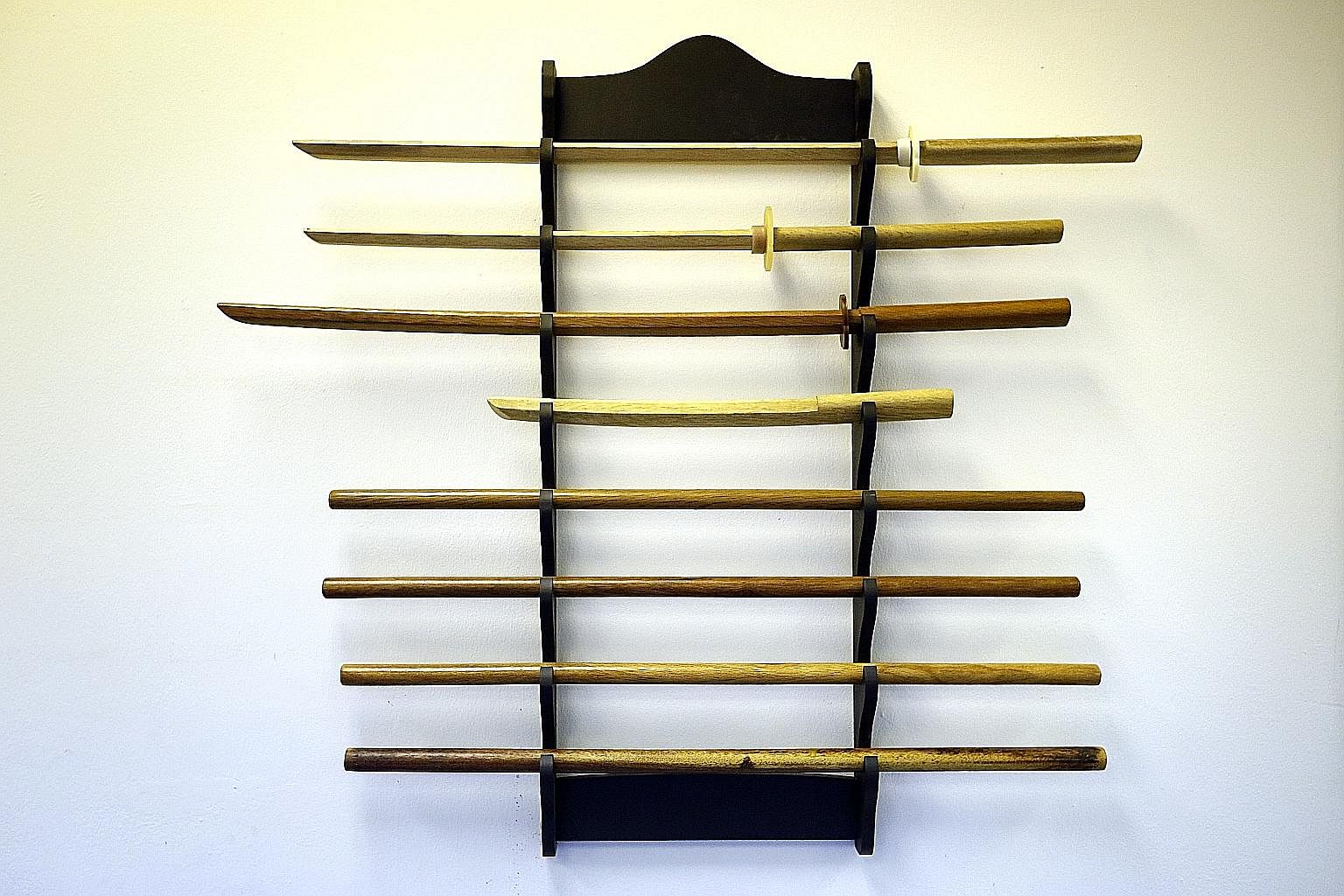
Ninjutsu student Lal Rin Lian uses a shuriken to distract his opponent - a common tactic that seeks to buy a practitioner sufficient time to take out his attacker - as he delivers a surprise kick during training. Besides striking, grappling, locking, choking, throwing and ground fighting, ninjutsu includes a variety of weapon skills, including using the wooden katana (above) and shuriken. For training purposes, wooden and rubber shurikens are used as real bladed shurikens are prohibited in Singapore.

